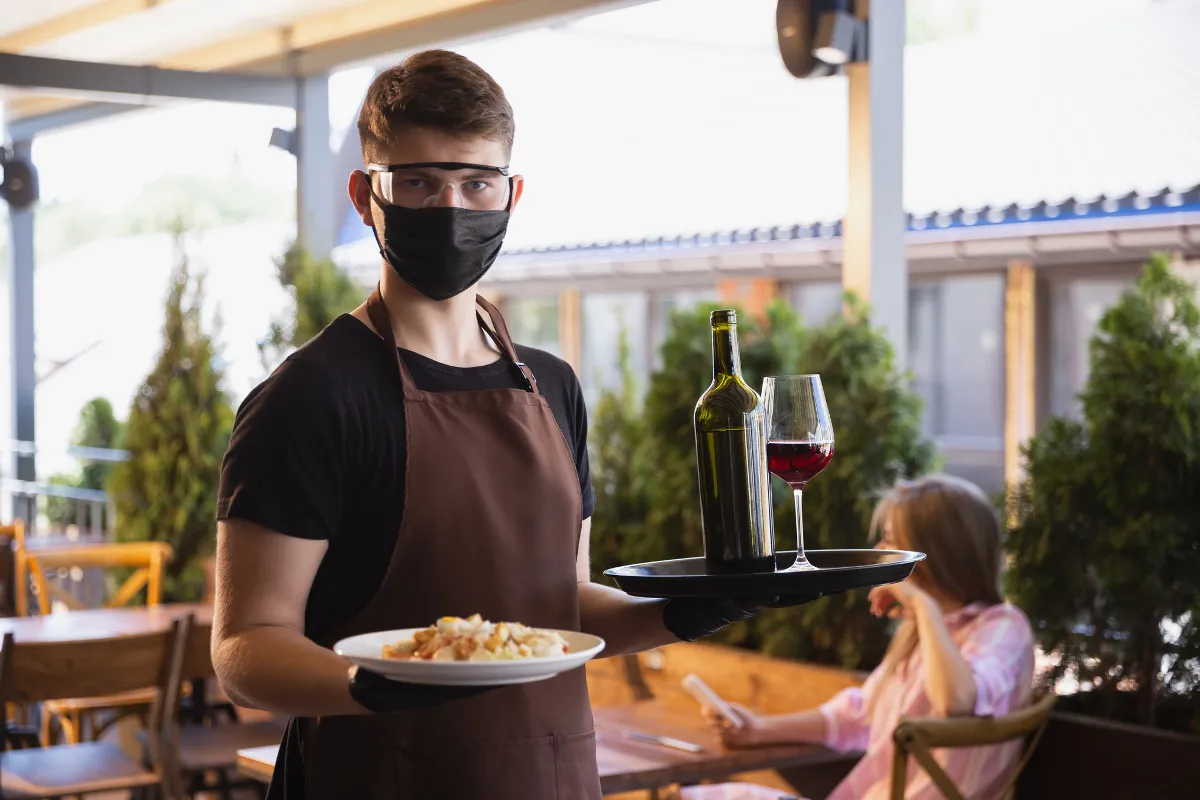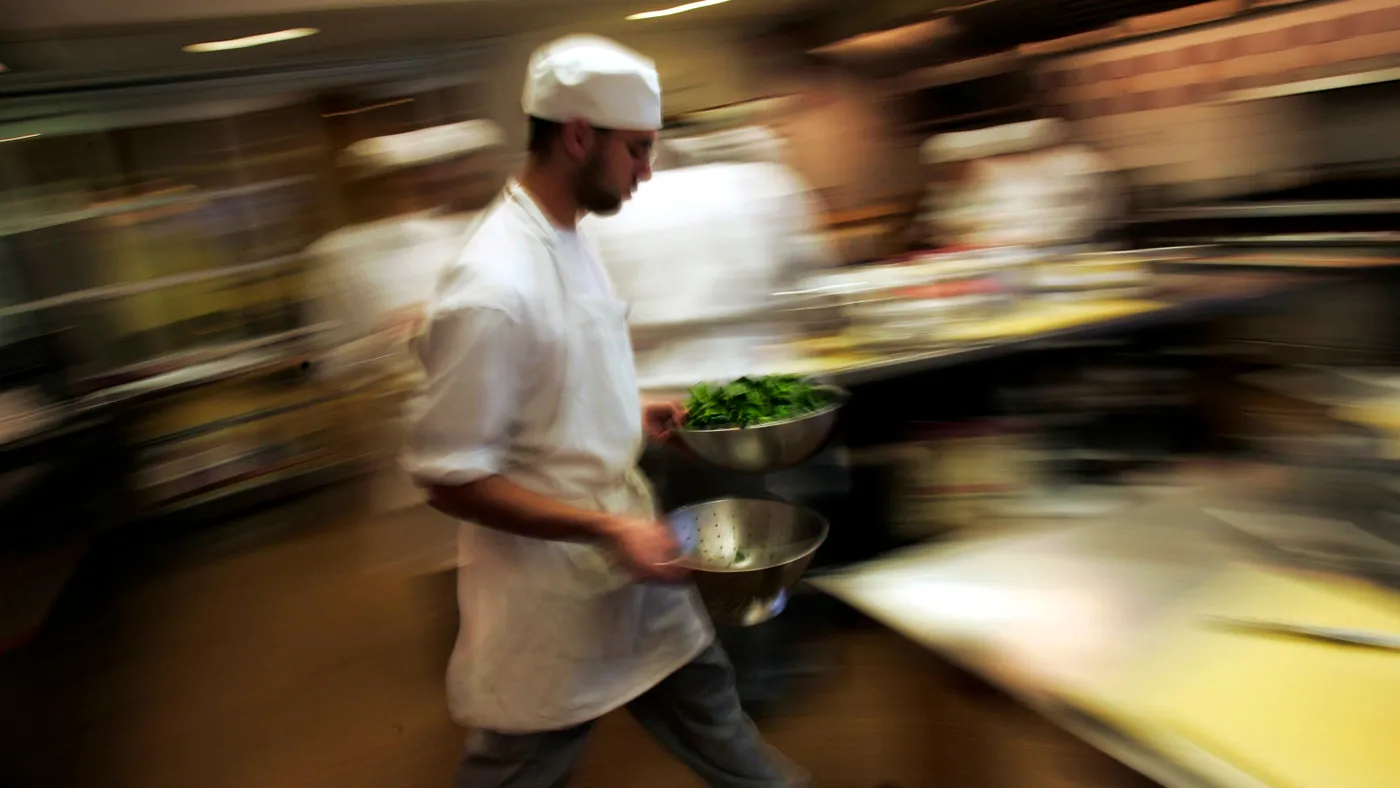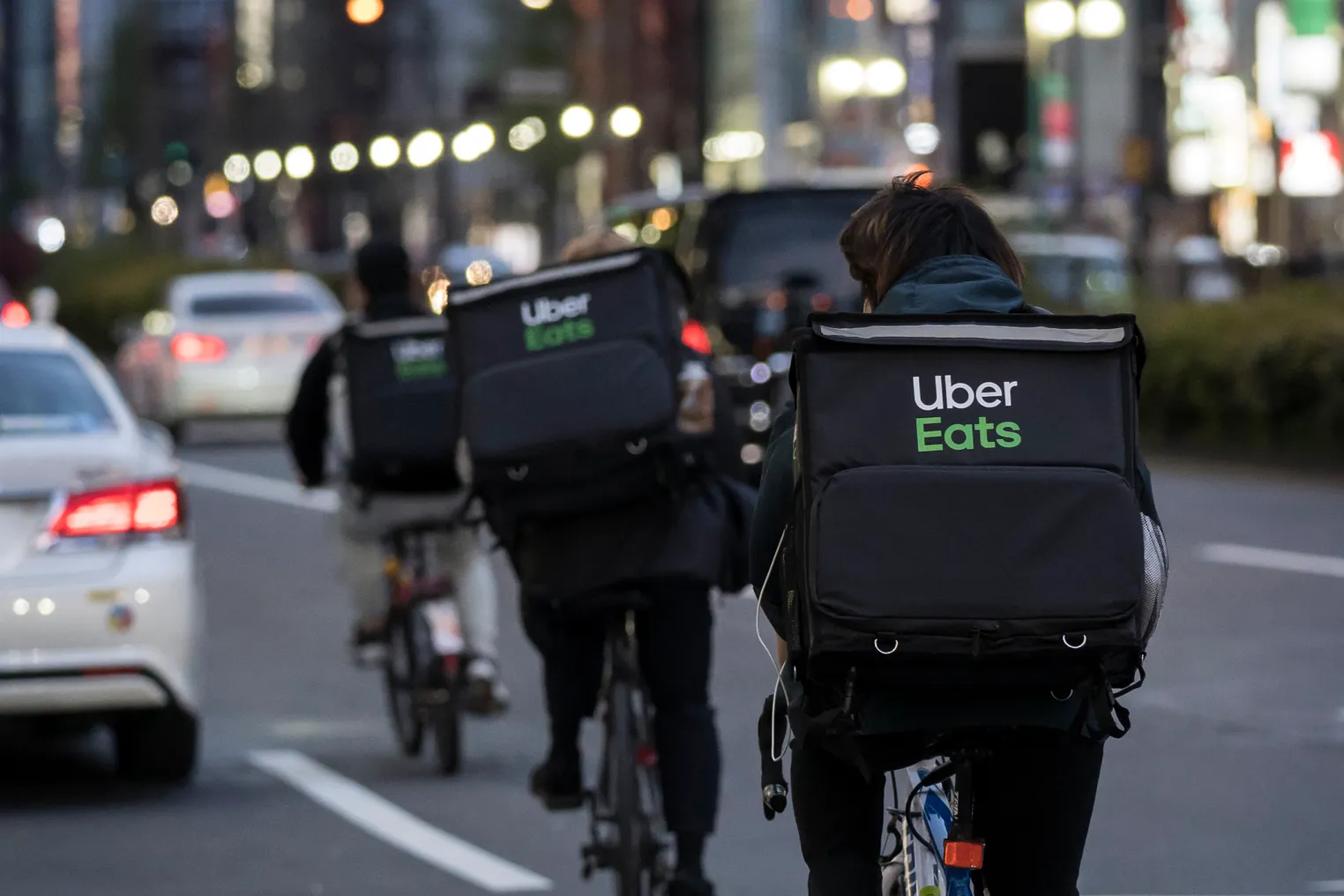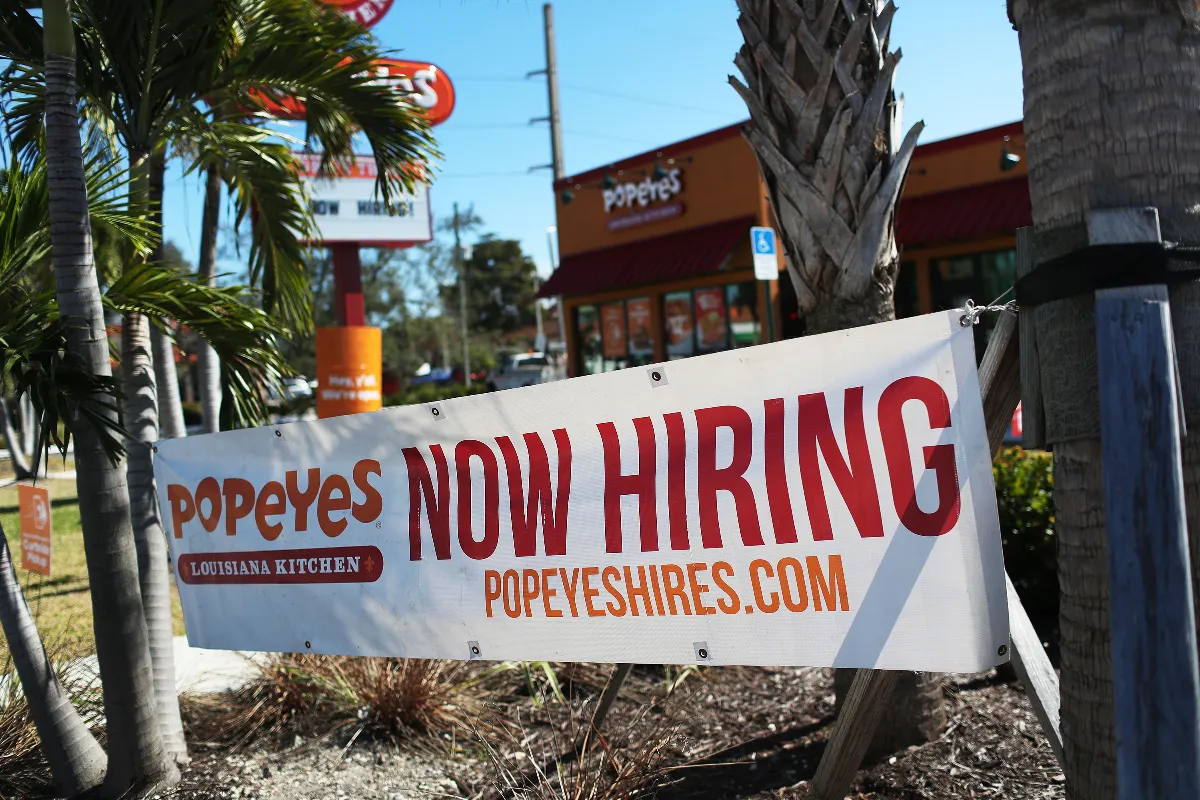
7 restaurant trends that will define 2022
This story is the first in a series on the trends that will shape restaurants in 2022.
Though many of the market forces that shaped the restaurant industry in 2021 were closely linked to disruption from the pandemic's onset in 2020, the new year will bring new challenges — and opportunities.
Unprecedented labor and supply chain pressure will drive most of the restaurant trends that will define 2022, analysts say. This instability will push operators to trim costs by shortening menus and invest in labor-saving technology in order to free up cash for wage increases.
"Where menus are relatively simple and include fewer options, the opportunity for automation is almost endless,” said Brian Warrener, associate professor of food and beverage industry management at Johnson & Wales University's College of Hospitality Management. "And five years ago, who would have thought there [would be] such a thing as a robot bartender? … I certainly think this kind of technology marches on. Maybe robots [will] become more capable of doing even more complex tasks and maybe we do see more replacement of people with machines."
Restaurants will also explore delivery options beyond costly third-party partnerships, and hike delivery menu prices to make the channel more lucrative as off-premise demand holds steady.
"The actual act of delivering is being operated by lots of different companies that really have no interest in what [restaurants are] doing. They just want to get out there and get their money… you're trying to be transformational, and they're being transactional," said Stephen Zagor, principal of Steve Zagor & Associates and assistant professor at Columbia Business School. "You want to create an experience with your delivery moment. How do you do that?"
Though these forecasted obstacles would be staggering for restaurants big and small, the year may still hold bright spots for business, experts predict. A swath of cheap commercial real estate could allow food halls, which were becoming a popular and profitable format before the COVID-19 crisis, to grow and offer outposts to independents looking to expand.
Increasing diner interest in plant-based fare also poses a robust sales opportunity for restaurants that have yet to offer meat analogues or would like to offer alternatives to proteins that have grown scarce and expensive due to supply chain delays.
Learn more about the seven trends analysts predict will shape the restaurant industry in 2022:

More investments in emerging labor-saving technology
As restaurants brace for continued labor struggles, more operators will invest in technology that makes them less reliant on employees, minimize costs and maximize efficiencies, experts said.
Half of U.S. operators plan to adopt automated, labor-saving technology in the next two to three years, according to a "Global State of the Hospitality Industry" report from Lightspeed. Forty-one percent of U.S. operators also report they are working with less staff than they require, and 87% of operators, owners or managers believe technology adoption has been key to business survival amid the pandemic, per the report.
Warrener predicts in the near future the restaurant tasks that will be automated by machines will still mostly consist of simple, back-of-house responsibilities like dishwashing.
"The restaurant industry has historically been very behind technologically," Jim Balis, managing director of strategic operations at CapitalSpring, said. "I think you're going to see a lot more with respect to robots. … The best example was probably the coffee space, where it's a combination of liquids, powders and ice that can easily be executed by a robot or some form of automation."
Balis said this same kind of technology could be applied to preparing smoothies and bowls, a trend the industry saw gain traction in 2021.
Jamba, for example, debuted an automated smoothie kiosk in a Walmart store at the end of 2020, and expanded this offering to additional locations last year. Sweetgreen also acquired automated restaurant company Spyce last year, with plans to implement the technology at its restaurants to improve food quality and store efficiency.
"A robot doesn't call in sick, typically, works on weekends, it's not having an affair with another employee," Balis said of the appeal labor-saving technology holds for cash-strapped operators.
Balis also expects to see more voice-based artificial intelligence at the drive-thru, specifically, since this channel has performed so well throughout the pandemic and continues to see strong traffic. Drive-thru bots can improve throughput and also create upsell opportunities, he said.
"I [recently spoke] to a company … that's doing facial technology. So you walk up to the drive-thru, it recognizes who you are and what you've ordered in the past, and then you actually pay with your face," Balis said. "So I think more and more so, you're gonna see that."

Labor and supply chain disruption keep simplification on the menu
Supply chain problems, rising food costs and a lack of available labor have led many restaurants to cut menu items. By the end of Q3 2021, total restaurant menu items offered had fallen 10% from a pre-pandemic high, according to Technomic. As the economic disruption of COVID-19 drags on, it is possible menus will continue to shrink.
Alec Haesler, a director at Carl Marks Advisors, said it is likely operators will shift between proteins if one protein source is experiencing sustained price inflation or shortages.
Meaghan Brophy, a retail content producer for Fit Small Business, said restaurants are likely to trim menus to simplify production processes for off-premise orders and organize kitchens more efficiently.
Simplified menus are likely here to stay, according to Rick Camac, dean of restaurant and hospitality management at the Institute of Culinary Education. Labor pressure will make it hard for restaurants to reintroduce menu items shed during the pandemic.
"I don't miss the monster menus that I don’t think we’re going to see anytime soon," Camac said. "Smaller, tight menus are definitely another trend that are here to stay. I don't see us all going back to these monstrous, multi-page menus anytime in the near future."
Shorter menus can introduce labor cost savings and reduce waste. According to the National Restaurant Association's annual survey of major trends, menu streamlining will likely continue through 2022.
At the DoorDash Mainstreet Strong Conference in October, Hudson Riehle, senior vice president for research and knowledge at the National Restaurant Association, said 8 out of 10 restaurants offering table service had to shorten menus due to supply chain issues, while about 7 out of 10 QSRs trimmed theirs.
"However, certain commodity groups, particularly the proteins beef, chicken, pork and eggs are running to double digit [wholesale price inflation]," Riehle said. "Looking ahead once again to 2022, it will not be as high. But, in particular, in the first six months, there is no relief."
Changing customer expectations may also push chains to shorten menus, especially at QSRs. Recent analysis from Oracle indicates customers may expect shorter drive-thru times, and some chains have responded already by simplifying drive-thru offerings. Burger King eliminated some complicated items from its menu to speed up its service after the pandemic triggered a surge in off-premise ordering, which pushed drive-thru times up across the board.

Major chains fuel plant-based growth, while operators offer more options to save money
Last year ushered in a number of plant-based meat launches at major restaurant chains, including McDonald's test of its McPlant products (made in partnership with Beyond Meat), an Impossible Foods ghost kitchen partnership with Dog Haus and Starbucks' test of a 100% plant-based menu at a Seattle store.
Recent analysis from Peter Saleh, managing director and restaurant analyst at BTIG, suggests McDonald's plant-based investments are paying off. BTIG estimates that several of the chain's eight test restaurants sell as many as 500 McPlant sandwiches a week, or roughly 70 per day, compared to BTIG's initial forecast of about 20 to 25 McPlant sandwiches per day.
"Anything plant-based is going to blow up over the next couple of years," Camac said. "I'm involved in raising funds for both public and private funds for two different [plant-based] companies. …When we peel through the curtain … the numbers that I’m seeing are just absolutely tremendous in terms of not only their growth recently but their future projections."
Zagor predicts both plant-based meat analogues and vegetarian meals will grow in popularity until they eventually become ubiquitous across restaurant chains.
"There's two ways of looking at it. There's the plant-pretender products, the products that generally are not plant products but suddenly are now made out of plants, like chicken and beef and pork and shrimp and sushi," Zagor said. "Then there's the plant possibilities, where you're really eating plants that are plants… [where] we're going to do something a little different with your beet and your asparagus to make it special."
Camac believes the impact of major chains offering plant-based items will significantly speed up adoption of plant-based fare across the broader industry.
"When mainstream gets a hold of that the trend is just going to go through the roof as opposed to it growing at a slower pace, which is what it's really done until, in my opinion, the last year," Camac said.
Plant-based items could also help restaurants build their menus at a lower cost without losing diner interest, Camac said, which could help operators struggling with price hikes on meat, for example, due to supply chain shortages.

Wage hikes will continue to entice scarce talent
The labor woes plaguing the restaurant industry are likely to continue into 2022, as U.S. Bureau of Labor Statistics data shows anemic gains in employment compared to recovering restaurant sales. The low labor force participation rate and high quit rate indicate employers will likely have to raise wages throughout the year to attract talent who is unwilling to work at the prevailing wage for restaurant positions.
"You're going to see an increased reliance on wage and benefit growth to attract new labor and improve employee satisfaction metrics and work-life balance and things like that to try and minimize attrition," Haesler said.
The continued prevalence of COVID-19 will drag the labor market. A similar effect took hold in the fall when the delta variant wiped out most of the employment gains of the first half of 2021, according to Elise Gould, a senior economist at the Economic Policy Institute.
"These jobs have gotten qualitatively worse because of the pandemic," Gould said. New cases are still high. The last week of December shattered records for daily cases, 486,428 on Dec. 29, the last day for which the CDC has announced case numbers. All this means the lingering effects of the virus on workers are unlikely to go away.
"People are less willing to put themselves in the kind of risk that a restaurant job entails," Brophy said. "So [they're] pivoting into other industries, like catering and things that offer lower risk and also higher wages."
These factors have led to a persistent decline in restaurant employment. About 750,000 fewer employees worked in foodservice in November 2021 than in February 2020, according to seasonally adjusted BLS data. That scarcity has contributed to an upward trend in wages, BLS data shows, with restaurant wages topping $16 an hour on average in October 2021.
Cristin O'Hara, managing director for Bank of America, said the industry's best hope might be recruiting and retaining younger workers while offering them a chance to move up.
"If we can keep some of these teenagers in the system and working and continuing to contribute, my guess is that will be the savior for 2022 and beyond, as they get trained up and get more experience, because there's a dearth of assistant managers and regional managers and managers of any kind," O'Hara said.
But Camac said he expects this worker shortage to hold steady.
"There's no magic bullet," Camac said. "There's nothing else I see that's going to make [labor market recovery] happen anytime soon, except that slow, gradual, painful drive toward building new prospects again, getting people interested again and changing your model so that people are most interested."
These pressures have driven restaurant companies from Darden to Starbucks to raise hourly wages. Inflation, however, has eaten up all of the wage gains throughout the economy, according to BLS data. While wages may nominally be up in 2021 versus 2020, real incomes are actually lower.

Food halls will fill empty commercial real estate
Even before the pandemic, food halls were popular among younger diners, and many developers designed these concepts to anchor large office or multifamily projects. Food halls typically offer quality food at an affordable price point as well as a social experience, according to a Cushman & Wakefield report. Since 2016, the real estate firm recorded 223 food halls operating in the U.S. and another 165 in development.
Though the COVID-19 crisis stalled food hall business over the past two years, developer interest is rebounding. Camac said several companies are creating large food halls that highlight different types of cuisine, like French or vegan food.
"Food halls are growing at a tremendous rate," Camac said. "One of the reasons for that is available real estate. There's just massive properties out there that are going for better rates than they've ever gone for in many, many years."
Many developers that started planning projects prior to the pandemic are now left with large spaces they can't fill, which is creating more opportunities to build food halls, Camac said.
Cushman & Wakefield found that food halls were more resilient compared to other retail categories during the pandemic, with 75% able to stay open by pivoting to a ghost kitchen model. At a food hall in Omaha, Nebraska, for example, vendors came together to offer a "World Food Tour" with takeout packages to provide a sample of each of the concepts. Many food halls also have expansive outdoor patios or rooftop gardens, Cushman & Wakefield said.
Food halls can offer security to landlords because they wouldn't have to manage a large vacancy if a food stall goes out of business. This could be a real advantage as over 10% of restaurants have closed during the pandemic, and many more are still unsure of their futures.

Delivery menu prices to rise as restaurants consider options beyond third-party partners to make the channel lucrative
Because dining rooms were closed in many markets for the better part of 2020 and some of 2021, restaurants turned to delivery to reach customers. But as dining room traffic recovers, operators will reevaluate their strategy around the channel going forward, analysts said.
Over the next 12 to 24 months, restaurants will review what business tactics are profitable, as well as how they can drive customers back in-house, Haesler said. For some operators, that could mean pushing customers to use takeout instead of third-party delivery.
"Obviously, the margins on third-party delivery are not great," Haesler said. "I don't think that's a viable option as a main driver of cash flow, but as a mix-and-match approach combined with everything else. I think it's still an important facet of the business."
To make things at least margin neutral, many chains have been increasing delivery menu pricing, which hasn't necessarily resulted in customer drop-off, said Saleh.
"So long as consumers want it and are willing to pay for it, which both clearly seem to be the case, I think [delivery] will evolve and continue to grow," Saleh said.
Some restaurants might consider ways to form their own company or cooperative to facilitate delivery instead of relying on transactional relationships with these diners through third-party partners, Zagor said.
"The whole delivery model is going to evolve. I don't necessarily think in the year 2022, but I think the seeds will start to get planted for a much more proprietary and a much more relationship-based delivery program," Zagor said.

Operators will phase out rudimentary curbside pickup offerings or invest in time-saving pickup lockers and shelves
As off-premise demand holds steady, restaurants will also focus on expanding their digital platforms.
"[Digital ordering] for pickup is actually a larger behavior than delivery and both are growing very rapidly," David Portalatin, SVP and industry advisor at The NPD Group said, adding that many consumers are taking ownership of the last mile and picking up their food to make off-premise more affordable.
Diner interest in cheaper off-premise options is one of the main reasons why restaurants are doubling down on drive-thru lanes, including ones dedicated to digital order pickups. Operators are also changing workflows to provide dedicated pickup areas inside restaurants, Portalatin said.
Curbside pickup, which gained popularity during dining room closures, will likely be phased out, however, said Balis.
"It's a combination of the consumer having less fear about coming into the restaurant to pick up their food and the labor challenges we're facing. As we try to be more efficient with our labor, curbside is very inefficient," he said.
Curbside is convenient for the guest, but it takes a restaurant team member away from taking orders or preparing food, he said.
Restaurants that choose to maintain curbside pickup can make the channel more efficient by offering pickup shelves and lockers. But interest in high-tech lockers that offer heated or refrigerated interiors may wane, since these products require integrations with third-party delivery partners and WiFi, Balis said. By contrast, standard shelves that are organized by last name don't require any extra technology and are easy to install. Operators, however, have to weigh the risk of food being stolen or a customer picking up the wrong order, he said.
"That's the sort of up and down trade of that technology. I think you're going to see [pickup lockers], but I think [adoption is] going to be slower than one would anticipate for those reasons," Balis said.













